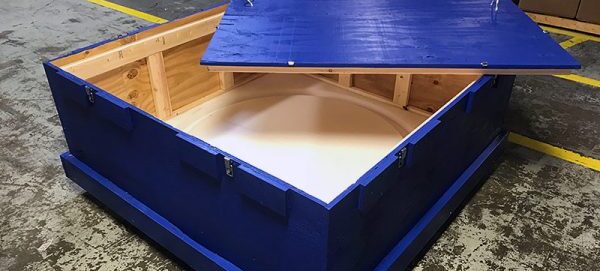
Top 5 Factors to Remember When Packaging Your Wooden Crates
Although wood packaging may seem simple on the outside, it’s anything but. Contractors and manufacturers must stay compliant with a wide array of stringent regulations that vary from country to country. Failing to comply with guidelines will result in long delays, potential return of the shipment, and possibly hefty fines. There are also other factors that may influence the overall price of shipment.
To ensure a smoother transportation process, it’s vital that all wooden crates and tertiary packaging materials are designed, built, and marked with efficiency and compliance in mind.
So…how do you efficiently design, build, and mark wooden crates? During the packaging process, you should always keep five specific factors in mind. Read below to learn more.
#1 Regulatory Markings
First, before you even design your wooden crates, you’ll need to understand which regulations you must comply with. Regulations not only affect how the packaging will be designed, but also what type of markings you must include on the packaging itself. For wooden crates, there are two specific regulations to keep in mind: ISPM 15 and military packaging codes.
ISPM 15
A regulatory document governing the treatment of wood packaging materials (WPM), the International Standards for Phytosanitary Measures No. 15 (ISPM-15) was created by the International Plant Protection Convention (IPPC) over 30 years ago.
The ISPM-15 crate standards involve the use of heat treatments for WPMs that are being exported from a member country. Special heat treatments ensure ISPM 15 crates and other wood packaging materials are disease-free and pest-free prior to reaching a destination country.
Additionally, specs regarding wood packaging material (WPM) leaving and entering the U.S. are enacted by the Department of Agriculture, Animal and Plant Health Inspection Service.
To certify that WPM has been properly treated to prevent plant-damaging insects from infesting another country, the USDA mandates the following marks on all WPM:
- IPPC graphic symbol
- ISO country code (the country that treated the WPM)
- A number assigned by the country’s official plant protection agency to the WPM’s producer
- Type of treatment (abbreviated, such as MB or HT for methyl bromide or heat)
These marks must be permanent and clearly visible on two or more opposite sides of each ISPM 15 crate. WPM materials do not include corrugated board, particle board, plywood, fiberboard, or veneer. Read our blog on ISPM-15 to learn more about compliance with this regulation and what may happen if you don’t follow guidelines.
Mil-Spec Marks
Mil spec marks are military specifications indicating the operational and physical characteristics of products being shipped to and from the U.S. They also designate WPM compliance with specific Department of Defense mandates. For example, the mil spec ASTM-D-6256 applies to sheathed panelboard wood shipping crates and states they can only be used to transport loads weighing less than 2,500 pounds. Other specs describe how wooden crates should be treated to avert insect infestations or secure volatile items.
To learn more about other mil spec packaging codes, please read our Understanding Mil Spec Packaging Regulations & Codes article.
#2 Special Handling Symbols
Next, there are a variety of symbols that indicate how a package should be handled to protect its contents and the people handling them.
Commonly used symbols are internationally standardized by ISO 780 or DIN 55-402, and include the following black and white graphical markings:
- Fragile:

- Shipment must be protected from heat:

- Keep shipment dry:

- Do not stack:
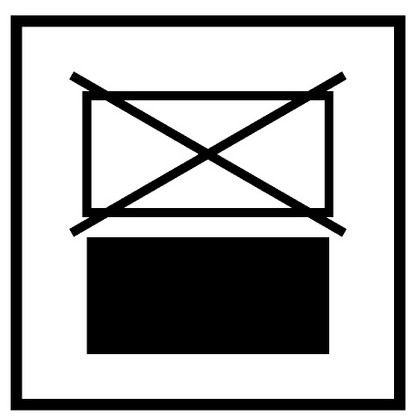
- Keep shipment in an upright position:

- Permissible temperature range:
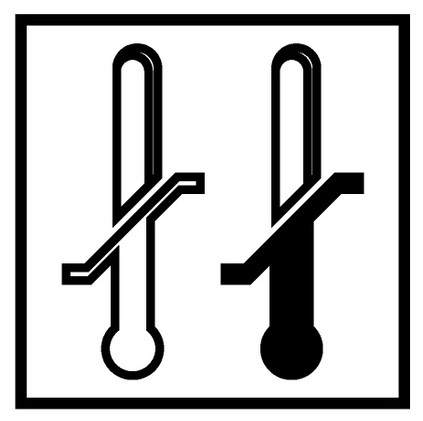
Companies should be aware that failing to put special handling symbols on their wooden packaging will force them to be financially responsible for damage to their shipments due to mishandling.
#3 Package Destination
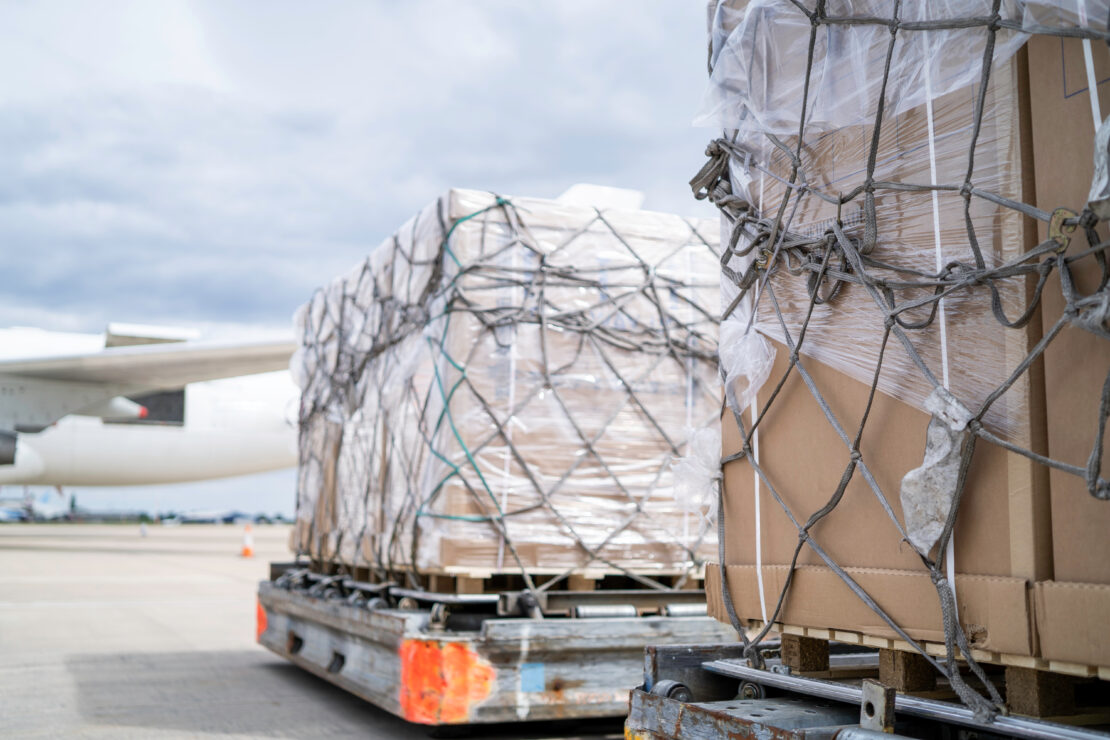
In addition to knowing what types of regulations you must follow, it’s important to understand the rules and regulations of the country you’re shipping the wooden crate to.
Different countries have different ways they maintain compliance with regulations. Companies should know how to prepare their export packaging to avoid costly returns and fines. They should also be familiar with a country’s customs regulations, tariffs/customs fees, and packing or labeling requirements established by that specific country.
ISPM-15 rules allow the receiving country to immediately export or fumigate the shipment at the expense of the company, as long as the noncompliant shipment is still in customs control or custody and the reason for refusing entry accompanies the rejected shipment.
#4 Standards for Large Wooden Packaging
If you’re shipping large wooden crates, you are also required to follow additional guidelines.
Some important wooden crate construction requirements include:
- Natural wood must be defect-free, dry, and well-seasoned when supporting large packaging.
- Wooden crates or pallets must be made of plywood (three-ply or higher). Plywood must be rotary cut, well-seasoned, dry, defect-free, and have sawn or sliced veneer.
- Large wood packaging must be tightly nailed and secured to corner ends or posts, or assembled using similar items.
#5 Number of Boxes & Weight/Dimensions
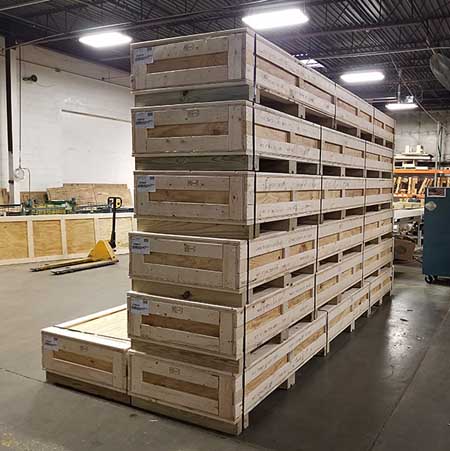
Lastly, you must know exactly how many boxes are being shipped per order and if the shipment can be palletized. There are some restrictions against palletizing, especially for military components being shipped. Palletized loads must not exceed specific size or weight limitations, depending on what type of items are in that load (e.g. Level A versus Level B). For example, palletized Level A packaging may not exceed 3,000 pounds while Level B packing must be palletized if loads are less than 1,500 pounds, and when loads are more than 1,500 pounds but less than 3,000 pounds.
Additionally, you may also want to kit items, but not every item may be kitted together. Just like palletizing, there are many military regulations surrounding kitting.
Get Wood Packaging Solutions from Export Corporation
Export packaging can seem daunting, but the process can be hassle-free when you work with our experienced professionals at Export Corporation. Founded over seven decades ago, Export Corporation specializes in designing and building wooden crates and other tertiary packaging for all types of industries, including military, aerospace, and automotive. We are globally recognized, ISO 9001 certified, ISPM-15-certified, and ITAR and SAM-registered.If you have general questions about wood packaging, or you would like to request a quote, please fill out our online form today.
